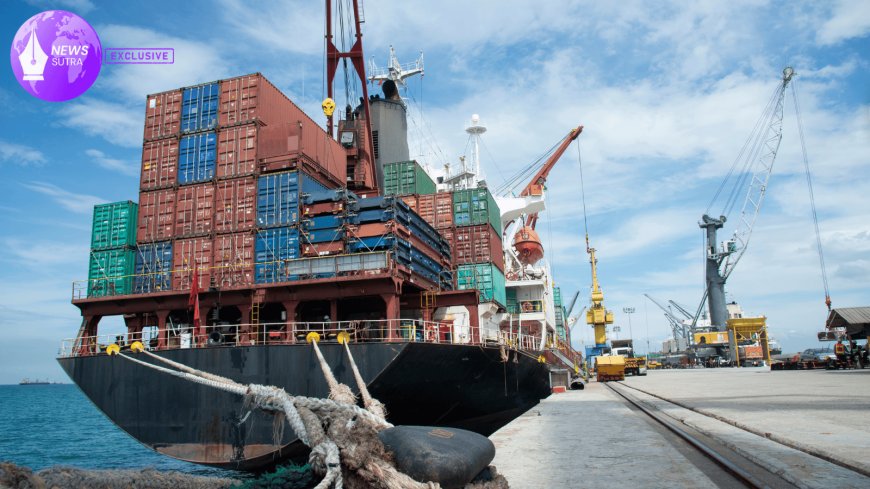Trump’s Tariffs Reimagined: Supply Chain Shifts Poised to Revive U.S. Manufacturing
Trump’s unprecedented tariffs are reshaping U.S. supply chains, driving reshoring opportunities and reviving American manufacturing.

WASHINGTON, D.C. — The Trump administration’s new round of tariffs, rolled out with unprecedented scope, is reshaping global supply chains in ways that analysts say could accelerate the long-discussed but rarely realized revival of U.S. manufacturing. Unlike past tariff regimes, these measures target not only China but also select European and Asian sectors, forcing companies to rethink logistics, sourcing, and even factory locations.
For American manufacturers, the tariffs are being reframed not as a punitive measure, but as an incentive to re-shore critical production. Supply chain experts note that, while the disruption will be painful in the short term, the long-term opportunities could redefine industrial capacity in the United States.
How These Tariffs Differ from the Past
Traditionally, U.S. tariffs were targeted, often confined to steel, aluminum, or specific consumer goods. The latest Trump tariffs, however, extend across semiconductors, electric vehicle components, medical devices, and rare earth minerals—sectors crucial to both economic security and national defense.
This breadth means that multinational corporations can no longer rely on patchwork exemptions or short-term rerouting. Instead, the current environment pushes decision-makers toward structural changes in how and where goods are produced.
“We’re seeing supply chain recalibration on a scale we haven’t witnessed in decades,” said Dr. Karen Phillips, a trade policy analyst at Georgetown University. “Unlike earlier tariffs, these are designed to encourage investment at home rather than simply punish abroad.”
Supply Chain Mapping: A Visual Shift in Strategy
Supply chain analysts are now leveraging mapping technologies to identify vulnerabilities and new opportunities. Interactive simulations reveal that companies with diversified sourcing already have a competitive advantage, while those heavily dependent on Chinese manufacturing face higher costs and tighter margins.
In one scenario modeled by Boston-based consultancy GlobalTrade Insights, a medium-sized electronics firm moving 30% of its production from Shenzhen to Texas reduced projected tariff exposure by 48%, while cutting trans-Pacific shipping delays by nearly three weeks.
Such mappings show the U.S. Midwest and Southeast gaining momentum as manufacturing hubs, particularly for auto parts, energy equipment, and medical technologies.
Voices from the Factory Floor
For small- and mid-sized firms, the tariff shift is more than theoretical.
Midwest Precision Tools, a Cincinnati-based manufacturer, has begun re-opening a previously shuttered plant. CEO Tom Richards explained:
“The tariffs change the math. Two years ago, labor costs made domestic production unthinkable. Now, when you add tariffs, freight costs, and geopolitical risk, bringing operations back to Ohio makes sense.”
Likewise, a California textiles startup that had relied on Southeast Asia for fabric imports is testing local suppliers for the first time in over a decade.
Challenges Ahead
Despite the optimism, manufacturers face hurdles:
-
Labor shortages: U.S. industry has struggled to recruit skilled machinists, welders, and engineers.
-
Higher input costs: Raw materials may initially cost more, squeezing small firms before efficiencies are realized.
-
Technology adoption: Automation and AI-driven manufacturing will be critical to offset wage differentials.
Industry leaders argue that vocational training programs and tax incentives for automation must accelerate in parallel with tariffs to ensure success.
Policy and Industry Recommendations
A 2025 report by the National Association of Manufacturers emphasizes three strategies for maximizing tariff-driven reshoring:
-
Invest in Digital Manufacturing Tools – including predictive analytics to streamline supply chains.
-
Expand Federal Support for Workforce Training – particularly in advanced welding, robotics, and semiconductor assembly.
-
Create Regional Manufacturing Clusters – akin to Silicon Valley, but for industrial sectors such as EV batteries or renewable energy equipment.
“The U.S. cannot win on tariffs alone,” said Sarah Donnelly, an economic strategist at the Brookings Institution. “The tariffs open the door. Policy and innovation must carry us through.”
What’s at Stake
For the U.S., the stakes are not merely economic. National security concerns—especially regarding semiconductors and critical minerals—make supply chain resilience a bipartisan priority. While critics argue that tariffs risk inflationary pressures, proponents see them as a once-in-a-generation chance to rebalance American industry.
If successful, the U.S. could reduce reliance on fragile overseas supply chains, spark job creation in hard-hit industrial regions, and strengthen its competitive edge in emerging technologies.
Conclusion
The reimagined Trump tariffs are more than a trade policy—they are a catalyst for supply chain transformation. While the disruptions are real, the long-term trajectory suggests a potential rebirth of American manufacturing, fueled by strategic reshoring and technological innovation.
For companies willing to adapt, the message is clear: the future of production may be closer to home than at any time in recent history.











